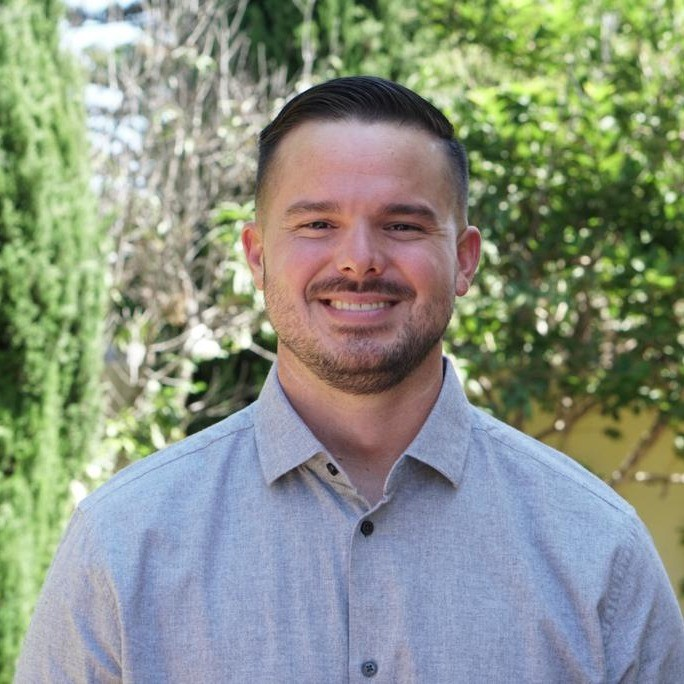Transitional living or transitional housing is the bridge between your recovery and everyday life. It is also known as sober living. A transitional living program does what it says. It allows you to transition from rehabilitation (rehab) to independent living in an easy manner. Even after rehab, you might need a bit of structure and support as you begin to take strides toward an independent life. This is where transitional living provides that extra layer of structure and support. Think of it as an extension of your rehab.
You can live in transitional housing settings as long as you want. You will have the freedom to relax and recover, but in a structured, substance-free environment. You will also share transitional housing with other residents who are on a recovery journey similar to yours. Transitional housing focuses on rules, daily chores, recovery meetings, mentoring, and curfew - so that you build a structure and routine in the very early days of your recovery to strongly establish and maintain your sobriety.
Key Benefits of Transitional Living Programs
There are numerous benefits you stand to gain by enrolling in a transitional living program. You are privy to round-the-clock experienced staff and live among those who are on a similar recovery path as you. You are surrounded by support that comes from a place of empathy and understanding. Here are the different benefits of a transitional living program:
- Transitional living programs are more flexible than rehab but still structured to allow you to incorporate the daily habits and routines you need as you transition to an independent life.
- You engage in mentoring and 12-step recovery meetings where you learn to become responsible for your own sobriety while you also gain the tools for independent living.
- You learn and practice coping skills to deal with triggers, temptations, and other life stressors so that you can effectively deal with different challenges without resorting to substance use ever again.
- You share the environment with peers and experienced staff, where you foster a sense of community and belonging.
- Transitional housing provides safe and comfortable accommodations that are both serene and private.
- Transitional houses provide immediate access to emergency services.
- You also receive access to therapeutic support - such as outpatient therapy, group therapy sessions, and other ongoing care services.
Call Design for Recovery to Begin Your Healing Journey!
Reach out to our team to discuss sober living options and next steps toward a healthier routine.
Who Is a Good Candidate for Transitional Living?
Now that you know what is transitional housing, you might want to know whether it can be the right fit for you. You can be a good candidate for transitional/sober living programs if:
- You have completed residential or outpatient rehab and need that bit of structure and support as you get used to an independent life.
- If you have received a dual diagnosis of substance use disorder and mental health condition, then you can benefit from the ongoing support that transitional housing provides.
- You require continued participation in therapy, counseling, or recovery meetings.
- You can benefit from life skills development and job placement services - transitional living programs can increase your chances of securing stable employment after recovery.
- You can benefit from emotional support from peers on recovery journeys similar to yours.
- If you do not have a loving, supportive recovery environment to go back to, especially during the early days of your recovery.
- If you are struggling with homelessness, you can receive specific grants and scholarships to transitional living programs as well. Check out SAHMSA’s (Substance Abuse and Mental Health Services Administration) grant provisions here.
How Transitional Living Helps Prevent Relapse?
Transitional living programs prioritize relapse prevention by providing education and practical strategies to identify your triggers. You learn to effectively cope with cravings without giving in and also learn the tools and skills you need to navigate challenging circumstances in your life that have previously led to substance use. In other words, they make you better prepared to sustain your hard-earned sobriety after rehab.
Moreover, transitional living programs offer long-term recovery support. You participate in a continuum of care services ranging from mentoring, group therapy, and recovery meetings that allow you to share and learn from others who have successfully maintained their sobriety. Transitional housing also celebrates your every victory and milestone, boosting your confidence in your commitment to sobriety.
Finally, transitional/sober living enables you to lead a structured life - with a daily routine involving a nutritious diet, consistent sleep, physical exercise, and other healthy living practices that prioritize your recovery every single day. They also increase your chances of finding secure employment and stable housing, which are able to prevent some of the many stressors that often lead to a relapse.
Contact Design for Recovery Today!
Fill out our quick form to connect with a peer mentor and learn how our sober living community supports accountability, structure, and personal growth in recovery.
What to Expect in a Transitional Living Facility?
The key aspects of what you can expect in a traditional living program are as follows:
Safe Environment:
You receive a structured, substance-free living space where you can relax and focus on your recovery.
Services:
You receive a range of services like personal mentoring, group therapy, life skills development, job training, and financial management. They focus on providing a strong foundation for your sober life ahead.
Community Integration:
As transitional housing is a communal living environment, you have many opportunities to develop sober connections and receive mutual support.
Rules and Regulations:
Rules and regulations around abstinence, alcohol and drug screenings, daily chores, participation in regular meetings, and curfew allow you to build habits and routines that will go a long way as you transition to independent living.
Relapse Prevention:
Transitional sober living is specifically focused on relapse prevention to ensure you enjoy a future free from the grip of any substance.
Finding the Right Transitional Living Program Near You
Your rehab center either provides or connects you with several transitional living programs. Along with your team, you can choose one that is a perfect fit for you. You can also ask your primary healthcare provider or family and friends for referrals. You can also Google the best transitional living programs near you. However, we urge you to visit these transitional/sober living facilities in person and make proper inquiries before you enroll in one.
At Design For Recovery, we provide structured transitional housing for young men, complete with clinical expertise and an understanding community so that you or a loved one never has to feel alone in their recovery journey.
Please do not hesitate to reach out to us today!
- Key Benefits of Transitional Living Programs
- Who Is a Good Candidate for Transitional Living?
- How Transitional Living Helps Prevent Relapse?
- What to Expect in a Transitional Living Facility?
- Finding the Right Transitional Living Program Near You
Begin Lasting Sobriety Now!
Frequently Asked Questions
Transitional living programs provide a step forward for young adults who have recently graduated from a residential treatment facility, have been released from incarceration, or are otherwise experiencing homelessness. A typical stay in this program lasts six to eighteen months, although lengths of stay may vary based on each person’s specific needs.
Transitional living centers offer a supportive environment for people to rebuild their confidence, find compassion, rediscover their identity and self-worth, and establish lasting personal relationships. In a transitional living center, residents, staff, healthcare professionals, and case managers work together in various support services to facilitate the success of each resident’s long-term goals.
Eligibility requirements and services provided by transitional living may vary depending on the type of program. Most programs utilize the following admission criteria:
- Must be at least 18 years old
- Must be prepared to maintain sobriety
- Must be homeless or at risk of homelessness
- Must display a strong drive to succeed in achieving recovery goals
- Must display respect for property
- Must display efforts and motivation to secure and keep a job
- Must establish a record for following set rules
- Must establish a track record of consistency in placement settings
- Must prove capable of and eager to accept responsibility for actions
Transitional housing offers several support services for young people, including medical care and therapy, peer support, life skills training, education or employment assistance, referral to 12-step meetings, and more.
Young adults can benefit from staying in transitional living centers for six to eighteen months, or even longer or shorter, depending on their specific needs. After leaving transitional housing, most individuals can gain independence and develop skills that help them acquire regular employment and stable housing. Moreover, those who were abusing drugs or alcohol were able to overcome their addiction upon program exit.
There are several benefits to living in a transitional house, such as:
- Structure– Structure serves as the program’s foundation, regardless of the type of transitional home. Some transitional living centers will have a higher degree of structure than others. Some houses, for instance, may have rules such as a strict curfew or complete attendance at 12-step meetings and other social and cultural events.
- Support– Support for making positive changes in one’s life is the primary goal of transitional living programs. Support groups, life skills training, mental health programs, and even physical health care can all be accessed through referrals made by transitional living programs.
- Stability– Having a safe and secure residence provides a sense of stability, responsibility, and purpose. The stability people need to recover can be found in the structure and consistency of a transitional living environment.
Religious groups, charitable organizations, and the government may fund transitional living programs. The cost depends on the transitional living center.
Government-funded programs do not cost anything, while some programs, such as sober living homes, charge a monthly fee. For instance, the average monthly rent for a room in a four-bedroom sober living house may amount to $1,000 and above. This amount may be split in half to accommodate two persons in each bedroom with bunk beds at $500 each per month. Take note that some facilities may charge a higher amount.
There are a number of options for finding temporary accommodation. For homelessness, the Department of Housing and Urban Development may be able to provide referrals.
On the other hand, you can get recommendations for sober living homes by contacting your treatment provider. Meanwhile, if you are required by the court to live in a transitional facility, the court or your parole officer may provide you with referrals.
To know whether a transitional living facility is the right match for you, get specifics about the services they may provide. You may need resources like outpatient treatment or peer support groups to thrive in transitional living.
If you are battling substance abuse and have completed residential treatment, sober living homes can provide the support and guidance you need to transition into regular life.
At Design for Recovery sober living, we offer a secure and stable environment where you or your loved one can recover physically, mentally, and emotionally. We also provide a community of individuals who can empathize with your struggles. If you put in the time and effort, you can recover from your addiction and live a fulfilling, sober life. Contact us today to learn more about our programs and services.
- Wilder Research. (2015). Supportive Housing Outcomes in Minnesota. A Study of Outcomes for Formerly Homeless Residents.
- Administration for Children & Families. Transitional Living Program Fact Sheet. Retrieved April 19, 2023, from https://www.acf.hhs.gov/fysb/fact-sheet/transitional-living-program-fact-sheet







Written By
David Beasley